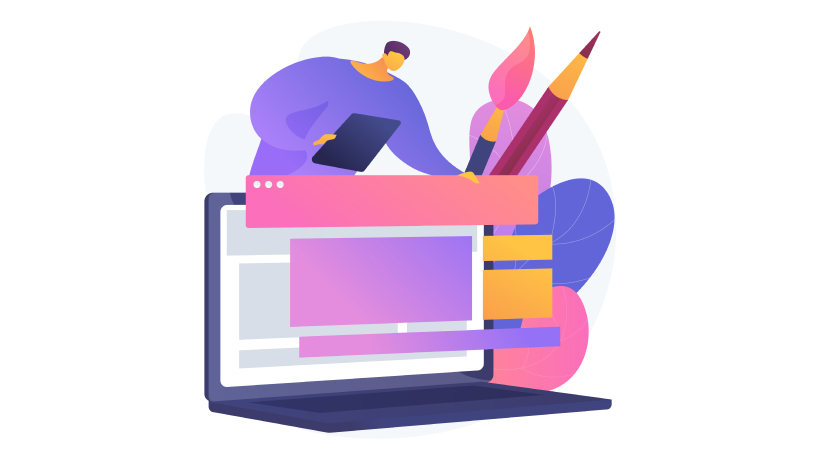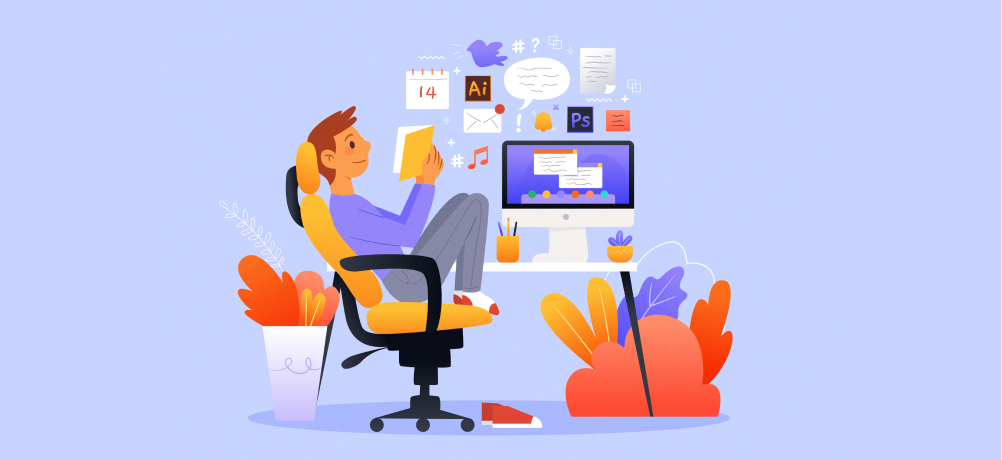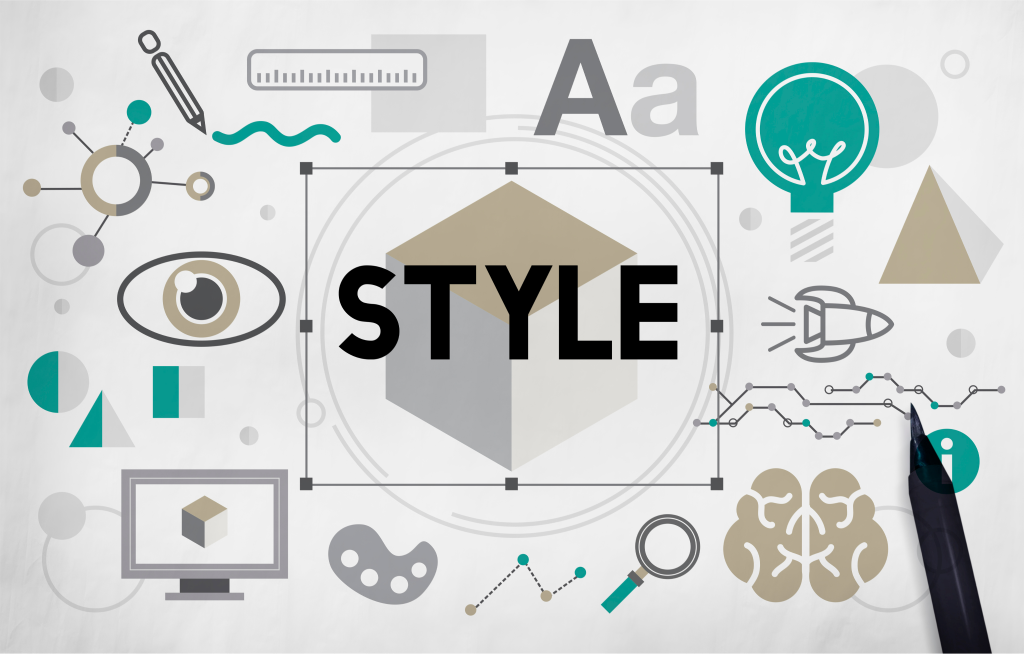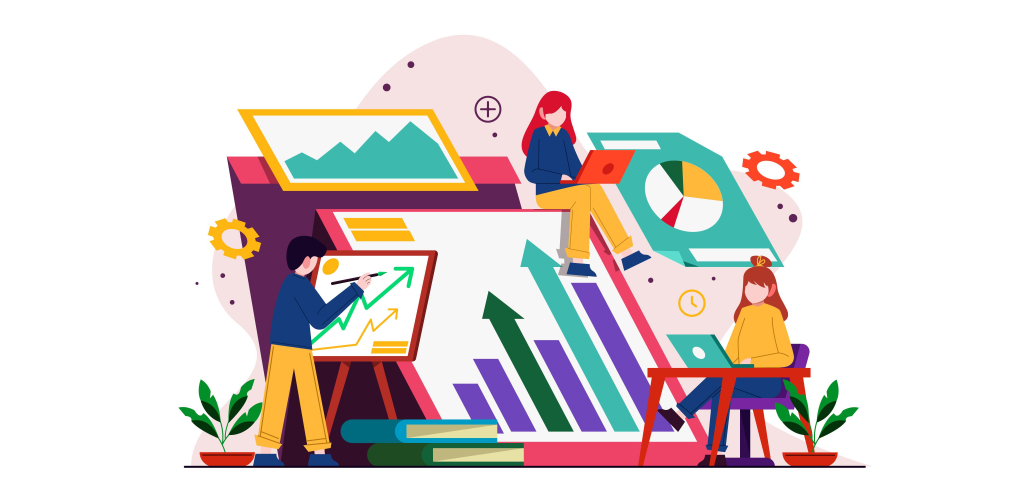
The Business of Freelance Graphic Design
Freelance Graphic Design has become a pivotal career, blending creativity with flexibility. It’s a realm where designers can express their creativity, setting their rules, working hours, and projects, all while contributing significantly to the visual aesthetics of the evolving digital world.
Definition of Freelance Graphic Design
Freelance Graphic Design is more than just a blend of art and technology; it’s about conveying complex ideas in a visually stimulating and accessible way. Freelance designers are self-employed professionals who create visuals, designs, layouts, and concepts that captivate consumers, often working on a project-to-project basis, catering to various clients and industries.
Importance of Freelance Graphic Design in Today’s Market
The importance of Freelance Graphic Design in today’s market is paramount. In an increasingly visual world where image is everything, graphic designers are the architects of the visual landscapes that define our digital experiences. They craft the visual identity of brands, create engaging user interfaces, and turn ordinary information into extraordinary visual stories. This role has become even more critical with the surge in online businesses and digital marketing, where the need for unique visual content is ever-growing.
Overview of Article Contents
In this article, we will journey through the essentials of establishing a freelance graphic design business, the keys to finding and maintaining fruitful client relationships, mastering the art and tools of the trade, managing your pricing and revenue wisely, and broadening your services to stand out in the competitive market.
Starting a Freelance Graphic Design Business
The Basics of Setting Up
Legal Considerations
When starting a graphic design business, understanding and complying with legal requirements is crucial. It involves choosing the right business structure, registering the business, and adhering to tax obligations. Ensuring all legalities are covered provides a solid foundation and avoids potential legal hassles down the line.
Setting Up Your Workspace
An organized, ergonomic, and inspiring workspace is crucial for fostering creativity and productivity. This space should be equipped with the necessary tools and technology, and it should be free from distractions, allowing the free flow of ideas and the focus required in design work.
Building a Graphic Design Brand
Defining Your Niche
In a saturated market, finding your niche is the key to standing out. It involves recognizing where your passion meets market demand, whether it’s logo design, web design, or illustration. Defining your niche helps in targeted marketing and building a coherent and recognizable brand image.
Creating a Unique Brand Identity
Your brand is your business’s personality. It is reflected in every aspect of your business, from your logo and business cards to your website and customer service. Developing a unique and consistent brand identity helps in building a reputation and trust among clients and peers.
Establishing an Online Presence
Developing a Professional Website
A professional and attractive website is your digital billboard. It’s where potential clients can view your portfolio, learn about your services, and contact you. It should be user-friendly, mobile-responsive, and reflective of your brand identity, showcasing your best work and professional achievements.
Leveraging Social Media and Freelance Graphic Design Platforms
In the era of digital networking, maintaining active and engaging profiles on social media and graphic design platforms is a powerful way to showcase your work, connect with other professionals and clients, and stay updated on industry trends and opportunities.

Finding and Managing Graphic Design Clients
Sourcing Freelance Design Opportunities
Networking Strategies
Effective networking, both online and offline, is the gateway to countless opportunities. Attending industry events, participating in online forums, and joining professional organizations can help establish valuable connections and expose you to potential clients and collaborators.
Using Job Boards and Platforms
Reliable online job boards and freelance platforms offer a plethora of opportunities to find clients actively seeking graphic design services. They provide a platform where freelancers can showcase their skills, bid for projects, and build a clientele.
Client Relationships Management
Communication Skills
Effective communication is the cornerstone of successful client relationships. It involves understanding the client's needs, setting clear expectations, and providing regular updates. Good communication reduces misunderstandings, ensures client satisfaction, and fosters long-term relationships.
Setting Expectations and Boundaries
Clearly outlining the scope of work, timelines, payment terms, and revision policies from the onset helps in managing client expectations and avoiding conflicts. It’s essential to be transparent about your working hours and availability to maintain a healthy work-life balance.
Graphic Design Contracts
Importance of a Well-Drafted Contract
A comprehensive and clear contract is a lifesaver in freelance business. It legally binds the designer and the client, outlining each party’s responsibilities and protecting both from potential disputes. It should encompass all project details, deliverables, timelines, payment terms, and intellectual property rights.
Key Components of a Graphic Design Contract
Incorporating key components such as detailed project scope, payment schedules, confidentiality clauses, and termination conditions makes a contract robust and clear, paving the way for a smooth and transparent working relationship.
Incorporating these insights and strategies can significantly aid in establishing and growing in the realm of Freelance Graphic Design, allowing designers to flourish in their creative endeavors while building a sustainable and rewarding business.

Mastering the Art: Skills and Tools
Essential Graphic Design Skills
Design Principles and Theory
Understanding and applying fundamental design principles and theories are indispensable for creating compelling and effective visuals. Knowledge of elements like balance, contrast, hierarchy, and alignment enables designers to create coherent and harmonious designs. Regularly exploring new ideas and approaches enhances your creativity and adaptability in the ever-evolving design landscape.
Knowledge of Graphic Design Trends
Being cognizant of contemporary graphic design trends is crucial for creating relevant and innovative designs. It involves staying informed about the latest developments in typography, color schemes, illustration styles, and design techniques. A design that aligns with current trends is more likely to resonate with the audience and fulfill client expectations.
Graphic Design Software and Tools
Overview of Popular Graphic Design Software
Mastering industry-standard software like Adobe Photoshop, Illustrator, and InDesign is pivotal for any graphic designer. These tools offer a plethora of features and capabilities that allow designers to bring their creative visions to life. Regularly updating software skills and exploring new tools can enhance design efficiency and open up new possibilities in visual creation.
Must-Have Graphic Design Tools
Beyond software, investing in high-quality, reliable design tools such as a graphic tablet, a high-resolution monitor, and a powerful computer is essential. These tools significantly impact the quality and efficiency of your work, allowing for more precise control and better visualization of your designs. Having the right tools is a prerequisite for maintaining a smooth and productive workflow.
Graphic Design Portfolio
Importance of a Portfolio
A meticulously curated portfolio is a graphic designer’s visual resume, showcasing the range, versatility, and depth of their work. It serves as a tangible representation of your design philosophy, style, and skills, enabling prospective clients to gauge your suitability for their projects. Regularly updating your portfolio with your latest and best works ensures that it accurately reflects your evolving skills and aesthetics.
Tips for Building an Effective Portfolio
Constructing an effective portfolio involves selecting diverse, high-quality pieces that demonstrate your design proficiency and creative thinking. Accompanying each piece with a concise description of the design process, challenges overcome, and the impact created adds context and depth to your work, allowing viewers to appreciate the thought and effort involved.

Pricing and Revenue
Graphic Design Pricing Strategies
Hourly Rates vs. Fixed Rates
Choosing between hourly and fixed rates is a critical decision that impacts your earnings and client relationships. Hourly rates are suitable for projects with an undefined scope, whereas fixed rates are ideal for well-defined projects. Conducting market research, assessing the project’s complexity, and evaluating your experience and expertise are crucial steps in determining competitive and fair pricing.
Factors Influencing Pricing
Various factors influence your pricing strategy, including your level of experience, the project’s complexity, and the prevailing market rates. Understanding the value you bring to the table and the client’s budget constraints is essential for setting realistic and mutually agreeable prices. Periodically reviewing and adjusting your rates to reflect your growing skills, experience, and market demand ensures the sustainability of your freelance business.
Managing Freelance Graphic Design Rates and Finances
Negotiating Rates
Skillful negotiation is pivotal in securing equitable compensation for your services. It involves being clear about your value proposition, understanding the client’s needs and budget, and being willing to make reasonable adjustments. Maintaining a positive and professional demeanor during negotiations fosters goodwill and lays the foundation for a fruitful working relationship.
Managing Cash Flow and Taxes
Effective financial management is the backbone of a successful freelance business. It involves maintaining a positive cash flow through timely invoicing, prudent spending, and regular savings. Being knowledgeable about tax obligations, eligible deductions, and effective tax planning strategies is crucial for ensuring legal compliance and optimizing your financial health.
These enhanced sections are designed to offer in-depth insights and practical advice on mastering the requisite skills and tools in graphic design and navigating the complexities of pricing and revenue management in the freelance graphic design business. Balancing artistic aspirations with financial prudence is key to building a fulfilling and sustainable career in freelance graphic design.

Enhancing Your Services
Offering Varied Graphic Design Services
Expanding Your Service Offerings
Diversifying your services is a strategic approach to tap into new market segments and enhance your income streams. It might involve learning new skills, exploring different design domains like web design, animation, or UX/UI design, and offering holistic solutions to meet varied client needs. Embracing versatility not only makes you more marketable but also enriches your creative repertoire and provides you with a more comprehensive perspective on design.
Staying Updated with Industry Developments
Continual learning and adaptation to the evolving design landscape are crucial for staying relevant and competitive. Regularly attending webinars, workshops, conferences, and reading industry publications can provide insights into emerging trends, technologies, and best practices in the design world. Keeping abreast of industry developments enables you to anticipate market needs and offer innovative solutions, thereby enhancing your market value and client satisfaction.
Online Graphic Design and Remote Work
Advantages of Online Graphic Design
The advent of online graphic design has revolutionized the way designers work, offering unprecedented flexibility, accessibility, and opportunities. It allows designers to collaborate with clients and other professionals from around the world, breaking geographical constraints, and accessing a global client base. The ability to work remotely enables designers to optimize their work environment and schedule, enhancing productivity and work-life balance.
Tips for Effective Remote Work
Establishing a structured routine, utilizing productivity tools, and maintaining open and regular communication are essential for successful remote work. Setting clear goals, prioritizing tasks, taking regular breaks, and creating a dedicated and inspirational workspace can help maintain focus and motivation. Building a support network of fellow freelancers and participating in online communities can provide emotional support, feedback, and a sense of belonging in the solitary journey of freelancing.

Conclusion
Recapitulation of Freelance Graphic Design Business
In conclusion, venturing into the world of Freelance Graphic Design is a multifaceted journey, intertwining creativity, learning, adaptability, and business acumen. From establishing your business and building your brand to mastering the art and managing client relations and finances, each step requires dedication, passion, and continuous improvement. Embracing challenges, learning from experiences, and striving for excellence are the keys to building a rewarding and sustainable freelance graphic design career.
Encouragement for Aspiring Freelance Designers
For those aspiring to carve their niche in this dynamic field, remember that every successful designer started as a beginner. Embrace your uniqueness, believe in your vision, be resilient, and never stop learning and exploring. The path might be laden with challenges and uncertainties, but the joy of creating, learning, and growing makes the journey worthwhile. Your creativity has the power to inspire, to communicate, and to bring about change. So, let your imagination soar, and paint the world with your ideas.
Call to Action and Final Thoughts
Dive deep into the boundless ocean of creativity, let your unique design language echo in the digital realm, and redefine visual narratives with your innovative ideas. Whether you’re a seasoned designer or a budding artist, there’s always something new to learn, create, and explore in the vibrant world of graphic design. So, keep pushing boundaries, stay curious, and remember, the world is your canvas, waiting to be adorned with your creations.
Expanding and enhancing your services while being adaptable and continually learning are essential strategies to thrive in the freelance graphic design industry. In conclusion, the journey might be challenging, but passion, creativity, resilience, and continuous learning can lead to a fulfilling and successful career in freelance graphic design. Keep creating, keep learning, and let your designs speak your truth to the world!
References
- Smith, J. (2021). The Freelance Designer’s Handbook. Graphic Design Press.
- Doe, A. & Lee, M. (2022). “The Impact of Graphic Design in Digital Marketing”, Journal of Visual Communication and Design, 10(4), pp. 123-135.
- Graphic Mama Blog. (2023). Graphic Design Trends. Retrieved from https://graphicmama.com/blog/graphic-design-trends-2023/
 Mark Petrenko
Mark Petrenko 
